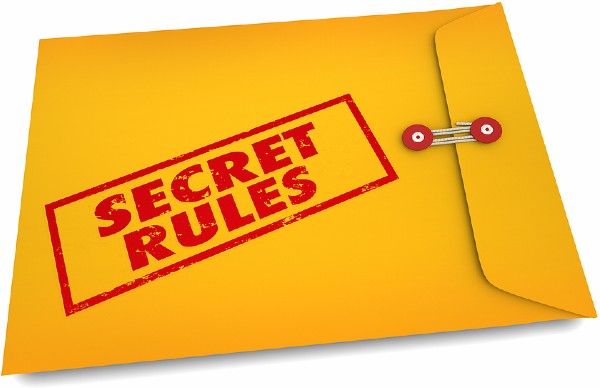Claude Hopkins, one of the Godfathers of direct response marketing and copywriting said, and I quote …
“There is one simple way to answer many advertising questions. Ask yourself… ‘Would it help a salesman sell the goods?’ ‘Would it help me sell them if I met a buyer in person?’ A fair answer to those questions avoids countless mistakes.”
Let’s explore this in the context of web marketing and lead generation …
You just clicked through to a website. What are the first things you see?
A company logo, a product name, facts, figures and features about the product.
Would that help a salesman sell the goods? At first blush you might be tempted to say yes, but you’d be wrong …
Is your landing page a little wet behind the ears?
A web page like this is analogous to a raw rookie salesman ‘showing up and throwing up’ in a prospect’s office. For those of you unfamiliar with the term, it has nothing to do with vomit. It means prattling on about your company and the features of your product, service, or program AT EXACTLY THE WRONG TIME!

In decades of personal selling, I have never seen a single sale made that way. Not one. The prospects I observed on hundreds of introductory calls didn’t give a rat’s ass about companies and products. They might have pretended they did, but it was almost always a smokescreen. Those things actually bored them to death.
Remember AIDA – Attention, Interest, Desire, Action? Well boredom is the opposite of interest, isn’t it? On the web, if you’ve gotten somebody to your website, you’ve already got their attention – momentarily. Now how do you graduate that attention to interest before it flits off into the ether?
Let me ask you. Imagine you’re at a party and someone approaches you and strikes up a conversation. What’s the biggest thing that determines whether you find that person interesting or not?
Check out this quote from star salesman Frank Bettger … “I no longer worry about being a brilliant conversationalist. I simply try to be a good listener. I notice that people who do that are usually welcome wherever they go.”
Profound isn’t it? Frank let the other person do most of the talking. Why? Because it allowed him to elicit their buying criteria. By learning this crucial piece of information, he then knew the exact questions he needed to ask to stimulate the prospect’s latent desire for his product.
And when he spoke, he spoke about the prospect’s desires and frustrations… and painted word pictures that inspired his prospects to envision a better life for themselves. He put the prospect on a pedestal, front and center. His company, and his product, were secondary. And when he did speak about those things, it was only IN CONTEXT to the prospect’s self interest.
Now back to our web page. Are there things we can do with the copy that can make it behave like a star salesman? You bet!
Let’s take Claude Hopkins’ sage advice. What does a star salesman do before communicating with a customer?
RESEARCH!
For the master salesperson, the prospect is an open book…

By observing someone, or talking to someone for just a short time, or even observing that person’s home or car, a great deal about that person’s attitudes can be inferred. And based on those attitudes, the salesperson has a starting point from which he or she can safely begin asking the questions that elicit the prospect’s buying criteria.
On the web, we’ve been handicapped in terms of executing these selling tasks. We couldn’t interact with individual prospects, and we couldn’t adjust our sales presentation based on the answers to the questions we posed. Or at least we couldn’t do those things without forfeiting the automated nature of the net. Of course, that’s all changed with the new AI-powered approach to lead gen and client-getting.
You still need to do your research and create a baseline. That means putting on your Columbo hat, and doing due diligence.
Your first job, before writing a word of copy, is to uncover the dominant desires, fears, and frustrations of the prospects you want to communicate with. So you can speak “as if” you know them, and appeal to their self-interest immediately on your landing page, much the way an effective salesperson does on meeting a client for the very first time.
And when you do… for heaven’s sake be human. Have a personality. The master salesperson is a charmer and a showman. He doesn’t talk in the “royal we” when he addresses a prospect, not if he expects to develop any rapport.
The 4 secret rules of the master persuader…

What AIDA is to marketing, LLBB is to selling… and it has meant tens of millions of dollars in sales to me. LLBB stands for Like -> Listen -> Believe -> Buy.
Whether in a live selling situation, or on a landing page, that’s what has to happen. Let me explain …
Before someone buys anything, trust is a prerequisite. Before trust can be established, the prospect must listen attentively to the seller. Before the prospect will listen to the seller, there must exist at the very least “rapport”, or liking. Here are the rules …
Rule A – For a prospect to like the salesperson, the salesperson must first like the prospect.
Now, at first blush you might think this has no parallel to copywriting and web marketing, but you’d be dead wrong. It’s everything.
If you inject personality into your funnel, prospects will make judgments about you. If prospects agree with the ideas put forward in the copy, and more importantly, feel that you understand them and their situation, a bond will be formed. And believe it or not, just as in a live selling situation, your prospects can detect insincerity in a heartbeat.
That’s why as a marketer, you need to fall in love with the people you’re communicating with. You need to feel their pain, and you need to care enough about them to pull out all of the stops to convince them to go for a better life. You have to be passionate about that, and be 100% convinced in the quality and efficacy of the program you’re selling. To be convincing, you must first be convinced. If you are, it will shine through in your copy like a starburst.
Secondly, you need to communicate your empathy for the prospect. We take a liking to people who are like us, so the best way to get the prospect to like you is by relating a personal story about how you experienced the prospect’s pain and overcame it. You don’t want to bore the prospect with a life story, just the parts that tie in directly with the self-interest of the prospect.
The goal is to bond with the prospect.
Rule B – If the prospect likes the salesperson, the prospect will listen attentively, and with an open mind.
Injecting your copy with personality, and displaying empathy for your prospect’s fears, frustrations, and beliefs (as uncovered in your research) has this effect. Engagement will go up dramatically if you get this right.
Rule C – If the prospect listens to the salesperson and the salesperson is enthusiastic about the results he hopes to help the prospect to achieve, the prospect will believe the salesperson.
Just as in a live selling situation, selling online is a transference of energy, passion and enthusiasm. If you’re truly pumped about what you’re selling, it will shine through in your copy and infect your prospect, making him or her want to believe what you’re saying.
That last point is critical for you to understand, so I’ll repeat it. Regardless of the strength of your proof, the prospect must “want” to believe. And this is a function of liking, and your own conviction about the product (or service) you’re selling.
Rule D – If the prospect believes the salesperson, the prospect will buy.
If you can’t open, you can’t close …
To summarize, understand that the key to getting more prospects to take action on your landing pages is to open a bridge of common understanding and personal rapport, before pitching your product, or your company.
If you follow Claude Hopkins’ sage advice, and these 4 rules of the master persuader, you can increase your lead flow and sales conversion dramatically.
Keep these things in mind as you work on your copy.
Until next time, Good Selling!
“What AIDA is to marketing, LLBB is to selling… and it has meant tens of millions of dollars in sales to me. LLBB stands for Like -> Listen -> Believe -> Buy.”
Can you please explain the distinction between Marketing and Selling.
Thanks.
The distinction can be hazy. The most succinct definition is marketing is a sales message that is delivered via media, and selling is a real time dialogue. Marketing is often used to initiate and pre-frame a real time sales dialog.